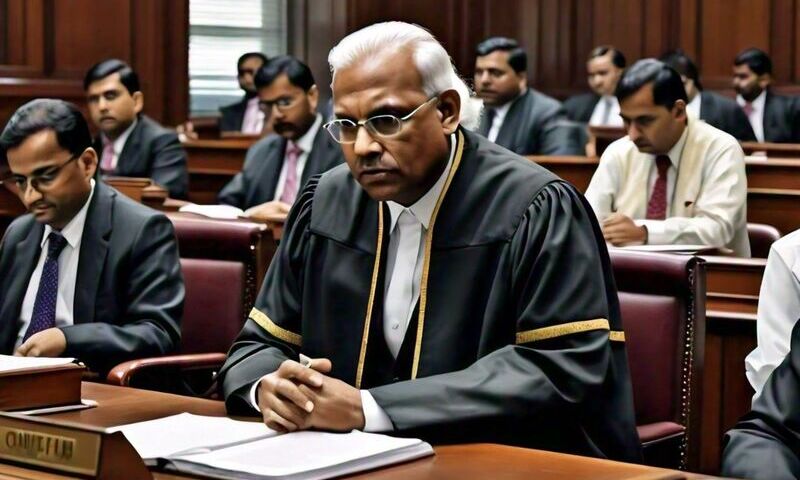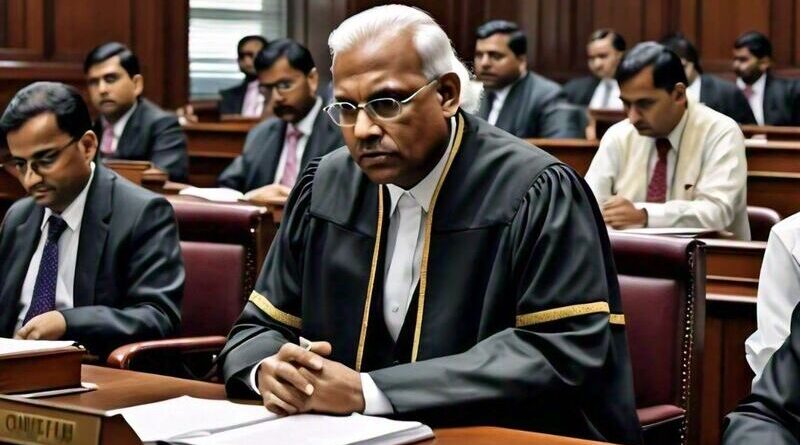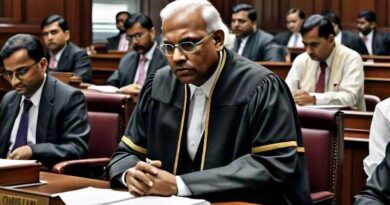Research Report Reveals Rampant Judicial Corruption in India

Research Report Reveals Rampant Judicial Corruption in India
The excerpts from the “India Judicial Research Report 2024: Decline of the Indian Judiciary” are given below.
Corruption is a major bottleneck that impedes the functioning of Indian courts. In the “State of the Judiciary” report released in November 2023, the Supreme Court of India has analyzed infrastructure, budgeting, human resources, and technology deployment factors to assess the inefficiency of courts where over 50 million (5 crore) cases are pending. However, the Supreme Court report has not considered the judicial corruption factor which is mainly responsible for the poor state of judiciary.
There are numerous reports of corruption in the Indian judiciary, but most corruption cases have been brushed under the carpet. In 2022, the Supreme Court dropped a contempt case against lawyer-activist Prashant Bhushan who tried to expose corruption in the judiciary with his interview given to a local magazine. Under pressure from the top court, he issued an apology in a convoluted language to get the contempt proceedings against him stopped.
However, the same Prashant Bhushan – who practices in the Supreme Court – kept talking about judicial corruption in open public forums. For example, in his speech at a seminar, Prashant Bhushan alludes to a Rs. 9 crore bribe to the Chief Justice when talking about judicial corruption in India. While it is difficult to directly prove the payment of bribes to judges, there is enough circumstantial evidence which can be drawn from their conduct and judgments that they pronounce in favour of certain politicians or affluent parties.
[ You can click here to watch that video of Prashant Bhushan about judicial corruption and the bad state of Indian judiciary. ]
RELATED REPORTS
[ India Judicial Research Report 2024 Released ]
[ India Judicial Research Report 2024: Decline of the Indian Judiciary ]
[ Negligible Use of Technology in Indian Courts: Research Report on Indian Judiciary ]
[ How Indian Judiciary Is Condemned in the World ]
[ Indian Judiciary Research Report: Professional Incompetence of Lawyers and Judges ]
[ Why Most Court Judgments in India Are Flawed ]
A senior advocate and former president of Supreme Court Bar Association, Dushyant Dave, observes that the judiciary in India has also become a “majoritarian judiciary.” In a January 2024 interview with LiveLaw news service, Dave said that the judiciary – including the Supreme Court – is remaining silent while several transgressions of law are taking place at the instance of the Executive (Modi regime).
These transgressions by the judiciary are also being seen in corruption cases where the judges are complicit in state crimes. Moreover, a slew of former Supreme Court judges – particularly Justice Madan B. Lokur – is delivering frequent lectures to expose the unethical working in the top court and other courts of India. Similarly, leading Supreme Court lawyers are also revealing the cases of massive corruption in the Indian judiciary.
Since corruption is a white-collar financial crime, it is not essential to show the exchange of money in the form of kickbacks or bribes to prove a crime. Only circumstantial evidence in terms of delinquency or misconduct of a judge is required to prosecute them. However, the vigilance committees of courts do not follow this fundamental principle of evidence and acquit the accused judges – sometimes without even holding a proper investigation.
As a journalist and anti-corruption activist, I had filed a complaint in the Supreme Court against Manish Khurana as AD&SJ-cum-P.O., Appellate Tribunal – MCD, Tis Hazari Courts, Delhi, for his involvement in a massive citywide construction-cum-corruption scandal. As my complaint was forwarded to Delhi High Court, the Registrar Vigilance of Delhi High Court held a video conference with me in July 2023 to record my statement.
I had submitted multiple exhibits, photographs, facts, and video links along with my 32-page complaint against judge Manish Khurana. However, I was informed by the Delhi High Court that some unnamed Vigilance Committee judges closed the corruption case of judge Manish Khurana without even informing him and without allowing me to participate in the prosecution process to prove his crime. Now, I have filed an appeal to reopen this case.
As the so-called vigilance committee judges provide impunity to the accused judicial officers, it shows their complicity in crime. In their wrongful decisions, they do not even take into account the anti-corruption laws.
According to the Prevention of Corruption Act (PC Act) and the Central Vigilance Commission (CVC) manual, such judges can be hauled up for corruption crimes. But they get off scot-free because the entire judiciary works as a mafia gang which does not hold thorough investigations in the crimes of judges who enjoy full impunity.
Most members of the judiciary, journalists, and activists do not say a word about corruption of the judges because they fear reprisal from the judges who misuse their authority to spread terror in the community.





